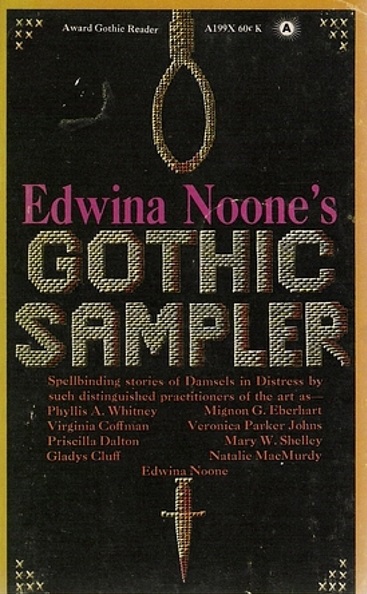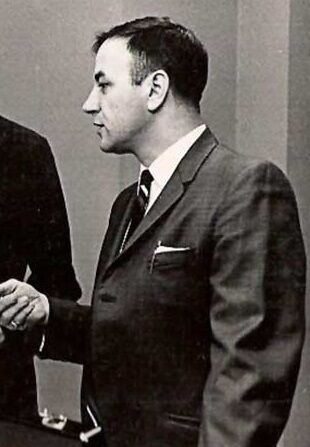
A collection of gothic short stories “from the world’s leading ladies of terror.” The editor, Edwina Noone, goes on for some time celebrating the triumphant female takeover from the likes of Edgar Allan Poe, Hugh Walpole, Henry James and other male gothic icons. “Who is better equipped to write of a female in trouble than a talented lady author?” muses Noone in the introduction, declaring the included “authoresses” are among “the most gifted in the genre.”
This is all a bit cheeky, since Edwina Noone is actually the femnine pseudonym of writer Michael Avallone. Avallone self-satisfyingly includes two of his own stories in this anthology, one under the moniker “Edwina Noone” and another under his other pseudonym “Priscilla Dalton.”
Funny business aside, Michael mostly writes the truth. This anthology is packed with enthralling stories of mystery and danger, and the majority of them are indeed by women writers. The book opens with a terrifying haunted house tale by Phyllis A. Whitney. Anyone who collects old gothic thrillers likely has a dozen or more Whitney titles in their collection. This short story is actually my first exposure to her writing, however, and I’m very impressed. Chilling, atmospheric, and a full character arc in 20 pages is an incredible accomplishment. “The Silver Bullet” is the highlight of the collection for sure.
The remaining shorts are generally of a lower caliber, but all are instantly intriguing with rich characters and enticing action. The collection ends with “The Swiss Peasant,” a beautiful tale of love and war by Mary Shelley. Shelley’s non-Frankenstein works go generally unread, so I appreciate this inclusion on her other accomplishments.
Without a doubt, this “sampler” achieves what it was meant to do, which is expose genre fans to the writing of authors they might not have stumbled across yet. It also might be one of the only anthologies to include short gothic works by popular authors from the 1960s. Generally these collections are filled with 19th century authors. Also, outside of Mary Shelley’s entry, I don’t think you can find these stories anywhere else. At least not easily.
Finally, the last interesting bit is that Noone/Avallone mentions his definition of what makes a novel “gothic.” As a fan of Avallone’s Craghold series, I was eager to hear his opinion on this. Here’s the three elements he says are a must:
1. Damsel in distress
2. Atmosphere and mood
3. The menace of the Old vs. the New
It’s a good list. Over simplistic, perhaps, but he’s not wrong. The “romance” of gothic Romance, I think, is having the fleeting feeling of danger among frightening atmosphere. Sure there’s a love interest as well, but their role often seems to be that of siren’s song, the thing which keeps the damsel homebound in the haunted dwelling.

All in all, I don’t know how easy this book is to find, but if you stumble across it fairly cheap it’s well worth having the rare experience of reading “modern” gothic short stories. Not a book I would easily give up from my collection.
Keep the discussion going on our social media:
